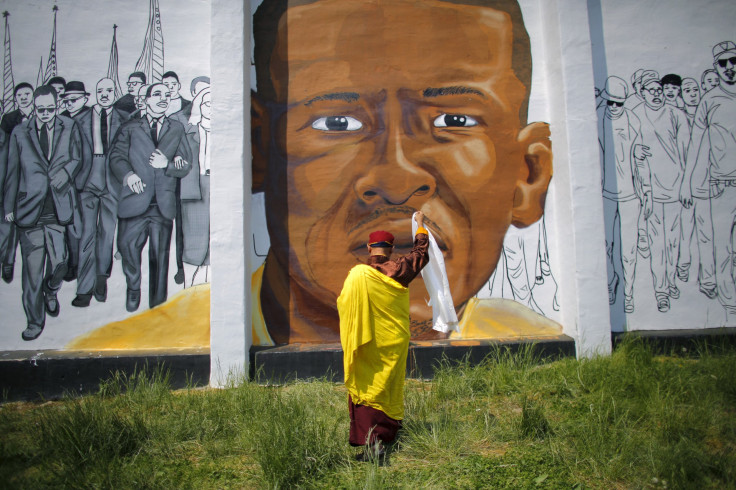Freddie Gray Leaked Autopsy: Report Shows Gray Suffered ‘High-Energy Injury’ In Baltimore Police Van

Freddie Gray suffered a “high-energy injury” most likely caused when the police van he was being transported in suddenly slowed down, an autopsy report obtained by the Baltimore Sun revealed Tuesday. The news comes just a day after six Baltimore police officers, who were indicted in the arrest and death of the African-American man, pleaded not guilty to all charges against them.
The report from the state medical examiner's office noted that Gray’s death was a homicide and cannot be called an accident because the officers failed to follow safety procedures "through acts of omission," according to the Baltimore Sun. The medical examiner also compared Gray's injury to those mostly seen in shallow-water diving incidents. A request to release the report was declined by a spokesman for the Maryland medical examiner and for the prosecutor's office, according to the Associated Press (AP). Baltimore State's Attorney Marilyn Mosby criticized the leak of the autopsy report.
“I want to make it very clear that the State's Attorney's Office did not release the Freddie Gray autopsy report. As I have repeatedly stated, I strongly condemn anyone with access to trial evidence who has leaked information prior to the resolution of this case,” Mosby said, in a statement, according to AP.
The 25-year-old Gray was arrested by Baltimore police on April 12 and allegedly suffered a spinal injury in the hour before his arrival at a police booking station. He went into a coma several days later and died a week after his arrest, prompting an investigation into the circumstances of his detention. Last month, a Maryland grand jury indicted all six officers on various charges, with one facing the most serious charge of second-degree "depraved-heart" murder.
According to the medical examiner's report, Gray, who was loaded into the van on his abdomen may have got to his feet before being thrown into a wall when the van abruptly changed direction. Gray was reportedly "at risk for an unsupported fall during acceleration or deceleration of the van," as he was not belted in, and had his wrists and ankles shackled.
Gray tested positive for opiates and cannabinoid at the University of Maryland Medical Center, according to the autopsy, cited by the Baltimore Sun. The six officers and their attorneys have not yet seen a copy of the report, the attorneys reportedly said, in a joint statement Tuesday.
"It was our understanding that the only copy of the autopsy was in the possession of the State's Attorney's Office and the State Medical Examiner's Officer," the defense attorneys reportedly said. "We were expecting, and continue to expect, all discovery, including the autopsy, to be turned over to us by no later than Friday, June 26."
A trial for the six officers charged in Gray’s death has been set for October.
© Copyright IBTimes 2024. All rights reserved.











